Maximizing LED display visibility: brightness, pixel pitch, and scheduling best practices
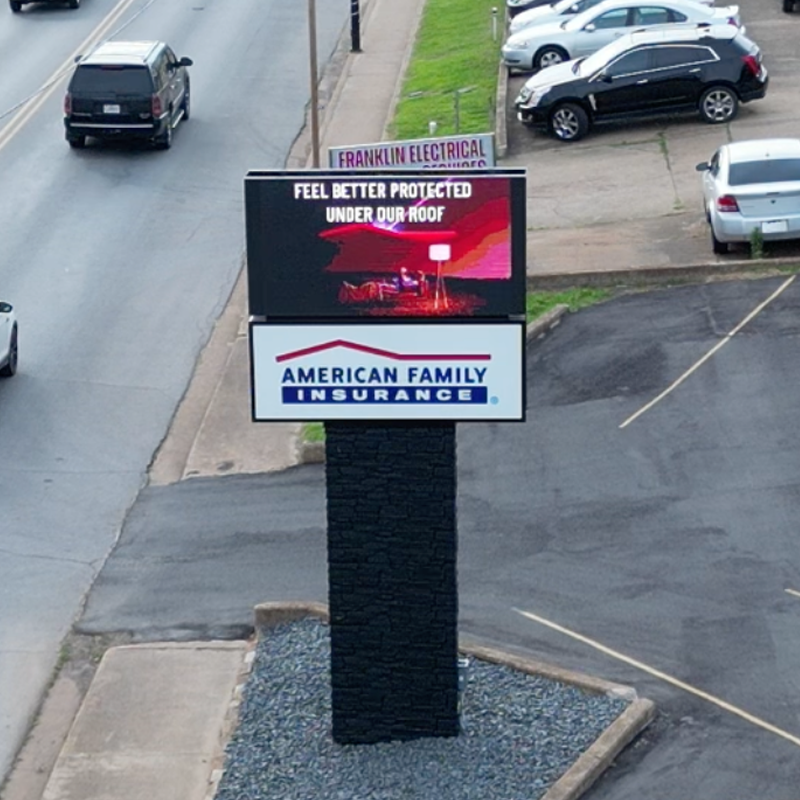
LED displays only work when people can clearly see and absorb their messages. Whether outdoors in bright daylight or indoors at an event, visibility is the single factor that determines impact. Brightness, pixel pitch, and scheduling all influence how effectively an LED display communicates. Getting these elements right ensures your investment produces real results. How bright should an LED display be for outdoor viewing? Brightness is measured in NITs, or candelas per square meter. Outdoor LED signs need to overcome direct sunlight to remain visible. Industry standards recommend 5,000–7,000 nits for outdoor displays, while 1,200 to 4,000 NITs is usually sufficient indoors. Automatic brightness controls are also valuable, adjusting output based on ambient light conditions. Displays that are too dim disappear in daylight, while signs that are overly bright at night can cause glare or eye fatigue. How does pixel pitch relate to the optimal viewing distance for an LED display? Pixel pitch describes the distance between the centers of two adjacent pixels. The smaller the pitch, the higher the resolution. A simple calculation helps: Viewing distance ≈ Pixel pitch (in mm) × 8–10 feet. For example, a 10mm pixel pitch is best viewed from 80–100 feet away. Outdoor signs, seen from a distance, often use larger pixel pitches (10mm–16mm), while indoor video walls use tighter pitches (1.5mm–4mm) for crisp visuals at closer ranges. Choosing the right pixel pitch ensures clarity without unnecessary cost. What is the recommended pixel pitch for an indoor LED screen? Indoor LED displays benefit from tighter pixel pitches because viewers stand closer. 2.5mm–3.9mm pitches are common in retail, hospitality, and corporate settings, allowing for sharp, high-resolution imagery. For immersive video walls or boardrooms, 1.2mm–1.9mm pitches deliver exceptional detail. Selecting the right pixel pitch balances budget with visual performance. What are the best practices for scheduling content to maximize LED display impact? Even the brightest display with perfect resolution loses effectiveness if the content isn’t timed well. Scheduling best practices include: Match timing to audience flow. Highlight promotions during rush hours, school traffic, or evening commutes. Rotate messages every 6–8 seconds. Viewers only have a moment to absorb your content. Prioritize high-contrast visuals. Use bold fonts, bright colors, and simple graphics that can be understood quickly. Daypart scheduling. Display coffee ads in the morning, dinner specials in the evening, or seasonal messages at appropriate times. Effective scheduling ensures the right message hits the right audience at the right moment. How can I prevent glare from reducing the visibility of my LED display? Glare is one of the most common visibility problems. It can be minimized by: Positioning the display away from direct sunlight angles. Using displays with anti-glare coatings or louvers. Employing brightness sensors to automatically adjust levels. Choosing solid-state engineered signs that maintain uniform brightness. These measures keep content legible in all conditions. Maximizing visibility requires the right balance of brightness, pixel pitch, and scheduling. When all three factors align, your LED display delivers stronger impressions, more engagement, and higher ROI. NEXT LED Signs builds displays engineered for clarity and reliability in every environment. Contact us today to start your project. How Next LED Signs Can Help Visibility isn’t guesswork—it’s engineering and timing. NEXT LED Signs designs LED displays for clear, reliable viewing in every condition. We right-size brightness, specify the correct pixel pitch, and program daypart schedules that match your traffic. Need an expert plan for your location? Request a site rendering and content schedule today. Let’s build a display that gets seen and remembered.. Contact Next LED Signs today FAQs: Does going brighter always improve outdoor LED visibility?Not necessarily. While outdoor LED displays typically need 5,000–8,000 nits (and sometimes over 10,000 nits in direct sunlight) pushing brightness too high has diminishing returns. It increases power consumption, generates heat, and can shorten LED lifespan. Efficiency — measured as nits-per-watt — is now a key performance metric in premium outdoor displays. What viewing distance should you plan around for a given pixel pitch?One commonly used rule is 1 mm pixel pitch ≈ 8 feet of optimal viewing distance. Another heuristic: multiply the pixel pitch in mm by 10 to get the recommended viewing distance in feet. For example: A 2 mm pitch → ~20 ft A 10 mm pitch → ~100 ft These are guidelines. For sharper control, use the “visual acuity distance” method (pixel pitch × 3438 → result in mm) to determine when viewers stop distinguishing individual pixels. How do I time or rotate LED content so it’s not ignored?Studies in digital signage behavior suggest that message rotation intervals of 6–10 seconds tend to maximize attention before the viewer’s gaze shifts Also, dayparting content (e.g. breakfast promos in the morning, events in the evening) increases relevance. Pair that with sensors or data on foot-traffic peaks to align your highest-priority ads with the busiest times. What pixel pitch works best for indoor LED applications like boardrooms or retail walls?Indoor settings demand finer pitches because viewers are closer. The sweet spot is often 1.5 mm – 4 mm depending on room size and viewer distance. Displays with pitches below 2 mm are common for premium video walls in lobbies or control rooms. But pushing below what your audience can perceptually distinguish can be wasted cost. What strategies help reduce glare or reflection on LED displays?A few proven tactics: Use anti-glare coatings or louvers to block oblique sunlight. Position displays to avoid direct alignment with the sun’s path. Deploy ambient light sensors to auto-adjust brightness and prevent wash-out. Opt for higher contrast settings, which help text and shapes punch through reflection.While I didn’t find a precise peer-reviewed stat on glare reduction percentage, many high-end LED systems incorporate these features as standard for outdoor viability.
What’s Really Changing in LED Signage?

LED signage has moved from “new technology” to everyday expectation. Dealers and buyers ask all the time which trends really matter, and here’s what we’re seeing: sharper indoor walls, smarter outdoor efficiency, and digital strategies that deliver measurable outcomes. Whether you manage a school, run a retail chain, or work with municipal projects, these shifts are shaping how screens get specified and installed. What’s driving the growth in LED signage? The biggest driver is performance. Out-of-home advertising keeps climbing past record highs, and digital formats lead that growth. Favorability and “took action” rates outpace many traditional channels, which is why brands continue shifting dollars into DOOH. For buyers, it’s no longer about whether digital is worth it—it’s about which solutions deliver ROI. What this means for you: when clients or committees question the cost, show them measurable outcomes: higher recall, faster response, and trackable results. Are dvLED walls really replacing tiled LCD indoors? They are, and faster than many expected. Buyers want seamless displays without distracting bezels, crisp resolution at closer viewing distances, and longer life cycles with easier maintenance. We’re seeing dvLED replace LCD in lobbies, studios, gyms, control rooms, and universities. Pixel pitch is trending below 1.5 mm, and flagship installs are moving under 1.0 mm with microLED. What this means for you: match pitch to real viewing distance. Overspecifying inflates budgets, while underspecifying disappoints audiences who stand too close. Are outdoor LED signs just brighter, or actually smarter? Brightness still matters, but efficiency is the bigger story. Adaptive dimming, tuned power supplies, and new driver ICs are cutting watts per square meter while keeping daylight visibility. Cities, schools, and businesses are also asking about EMC compliance, weatherproof ratings, and diagnostics—because uptime and reliability determine real ROI. What this means for you: always ask vendors for typical power draw, not just maximum. Request dimming curves by time of day and remote diagnostic options to protect your investment. How does programmatic DOOH change opportunities for buyers? Programmatic used to be limited to big-city billboards. Now, venues, QSRs, schools, and municipalities use it to sell space and reach audiences in real time. Advertisers want moments that matter—lunchtime at a drive-thru, pregame at a stadium, pickup time at a school. Proof of play and campaign lift are non-negotiable now. What this means for you: if your network can support daypart scheduling and fast creative swaps, you unlock new revenue streams. Cloud control with cellular keeps updates simple, even for small IT teams. Does digital signage really change customer behavior? Yes—and the numbers prove it. Retailers report significant sales lift when messages run at the point of decision. Queue screens reduce perceived wait times by more than 30%, cutting frustration and improving satisfaction. When content entertains or informs, audiences stay engaged—and engaged audiences act. What this means for you: map content to the exact moments your audience makes decisions. Commute windows, lunch rush, dismissal times, and event days all deserve unique messaging. What indoor applications are expanding fastest? Corporate & civic hubs: lobby welcome walls, town-hall stages, and emergency messaging. Education: digital marquees, gym scoreboards, and video walls for ceremonies. Healthcare & hospitality: wayfinding displays, patient communication, and lobby storytelling. Spec tip: look for service-friendly cabinets—front access and modular design reduce downtime and service costs. What outdoor applications are getting funded right now? Retail & QSR: roadside displays, drive-thru boards, and promotions that shift by inventory and time of day. Municipal & K-12: safety alerts, schedule updates, and grant-friendly energy profiles. Venues & arenas: sponsor takeovers, countdowns, and live fan engagement. Spec tip: publish brightness targets for day and night, then automate dimming. This saves energy and keeps neighbors on your side. How should ROI be measured in 2025? Pick two clear metrics per site and track them weekly. Retail/QSR: sales lift for promoted items, add-on purchase rates. Education/municipal: estimated impressions during peak traffic, response to calls to action. Events/venues: sponsor impressions, redemption or scan rates. What this means for you: link content changes directly to those metrics. It proves value and makes renewals easier. What questions should buyers ask vendors today? “What’s the typical power use at my brightness targets?” “Can you show EMC and weatherproofing certifications?” “How are diagnostics and part swaps handled remotely?” “What pixel pitch fits my viewing distance?” “What’s the five-year estimate for service and power costs?” What’s the bottom line? The trends shaping indoor and outdoor LED signage are clear: finer pixel pitch, smarter power management, and content strategies that create measurable results. Buyers want more than just specs—they want screens that fit real-world use. Get the pitch right, balance brightness, and map content to daily moments, and your screens will return value faster than you expect. Plan your project with NEXT LED Signs If these trends match your goals, let’s build a plan that fits your site. We map real viewing distance, set day and night brightness targets, and keep power use in check. Then we show you how the screen will look on location. What you get: A site-specific recommendation on pixel pitch EMC, weather, and service-access recommendations A rendering of your prop[osed signs A clear quote with in-stock options and fast 5-day shipping Contact NEXT LED Signs to request your site plan and photo rendering. We’ll help you choose the right display, schedule content by daypart, and launch with confidence. FAQs (real buyer questions in 2025) What pixel pitch is best for indoor video walls?A quick rule: viewing distance ÷ 8. At 10 feet, ~1.5 mm looks sharp. How bright should an outdoor sign be?Bright enough for midday sun, but dim automatically at dusk and night. Modern controls cut energy use and reduce glare. Is DOOH valuable for small venues or cities?Yes. Programmatic campaigns let even small networks sell space at higher rates when tied to time and context. Can cellular connectivity manage sign content?Yes. Cellular is secure, reliable, and keeps updates fast without IT overhead.
Know What It Takes To Design For LED Signs?
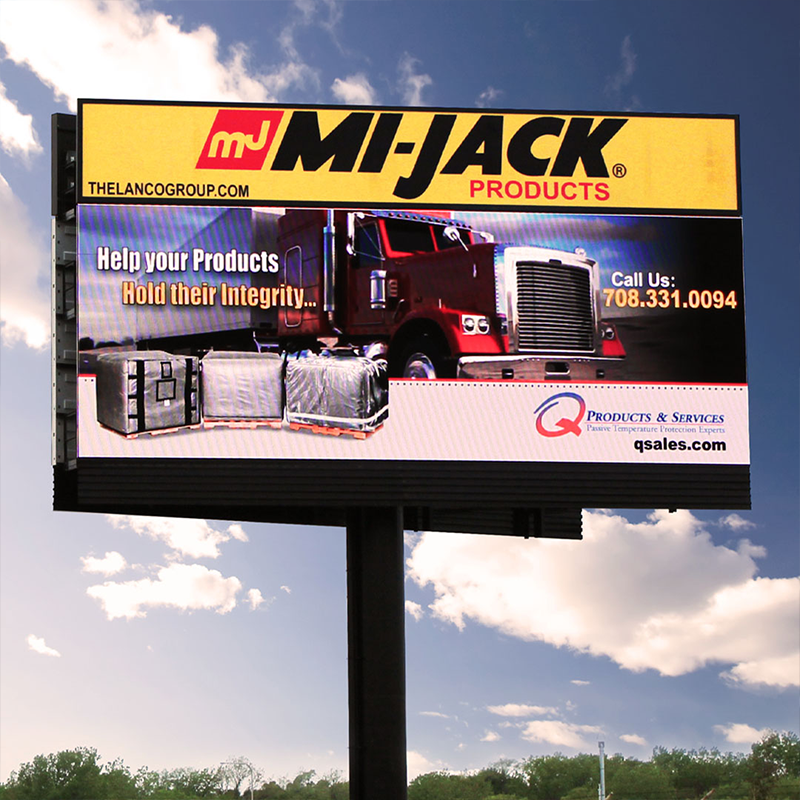
Designing for LED signs isn’t just graphic design at a different size. It’s about legibility at speed, clarity at distance, and timing that respects how people move. When you apply a few core principles—contrast, hierarchy, brevity, and pacing—your messages land fast and look premium on any display. https://youtu.be/TY6rAhOZeXY Start with viewing distance (then pick pixel pitch) Viewing distance drives everything. The farther away your audience is, the larger your type needs to be and the less detail you can show. As a rule of thumb, use large, high-weight fonts with generous spacing at longer distances. Match the display’s pixel pitch to the typical viewing distance so text edges look clean (smaller pitch = tighter, smoother text). Build clear hierarchy Give viewers one job at a time. Lead with a short, bold headline, follow with a single supporting point, and finish with a simple call to action. Avoid stacking multiple CTAs on a single frame. White space is your friend—it separates ideas and makes each element readable at a glance. Contrast and color that pop High contrast wins. Pair light text on dark backgrounds (or vice versa); avoid mid-tone on mid-tone combinations that blend at distance. Reserve brand accent colors for key words or numbers so they stand out. Maintain color consistency across frames so the message reads as one cohesive story. Keep copy tight and time it right Short beats long—think fragments, not sentences. Most viewers have only seconds. Use 2–3 concise frames rather than one crowded frame. Allow enough on-screen time for the slowest reader in your audience. As a starting point, aim ~2–3 seconds for a simple headline and a touch longer when you include a supporting line. Motion with purpose Motion should guide attention, not distract. Use subtle fades, slides, or counters to direct the eye to the key message. Avoid fast flashing or excessive animation that can reduce readability. Ambient light and brightness Daylight, window glare, and interior lighting affect visibility. Set brightness so text stays crisp without washing out colors. If you’re near windows or in bright lobbies, prioritize bold weights and higher contrast palettes. Data-supported impact you can cite Digital signage has been shown to lift sales by roughly 32% and reduce perceived wait times by up to 35%. Studies also report 55–83% higher ad recall than static signage, and large majorities of shoppers say screens influence what they buy. In other words: clear LED design pays off in real outcomes, not just good looks. Production checklist (rapid pass) One big idea per frame High-contrast color pairings Large, heavy fonts with generous spacing Tight copy; minimal punctuation Intentional motion cues CTA present on the final frame Why NEXT LED Signs is the right choice Great design deserves great hardware. NEXT LED Signs builds indoor and outdoor LED displays engineered for clarity, reliability, and easy updates. Every display includes cloud-based software so your team can schedule, swap, and test messages in minutes. Ready to make high-impact LED content the easy way? Contact NEXT LED Signs today for a free quote. FAQs About Designing Messages for LED Signs How much do well-designed LED signs impact sales?Retailers using digital signage report average sales lifts around 32%, showing how clear, concise on-screen messages drive action. Do LED signs improve message recall compared to static posters?Yes. Studies show 55–83% higher ad recall for digital signage versus static, thanks to motion, contrast, and updatable content. Can LED sign design help with perceived wait times?Well-timed, informative frames can reduce perceived wait times by up to 35%, improving the overall customer experience. What copy length works best when designing for LED signs? Keep headlines short and scannable (a few impactful words). Use a single supporting line and a simple CTA on the closing frame. How should I use motion when designing for LED signs?Use motion to guide attention—subtle transitions, directional movement, or counters. Avoid rapid flashing that hurts legibility.
How to Enhance Guest Experiences with Digital Signs for Your Hotel or Resort
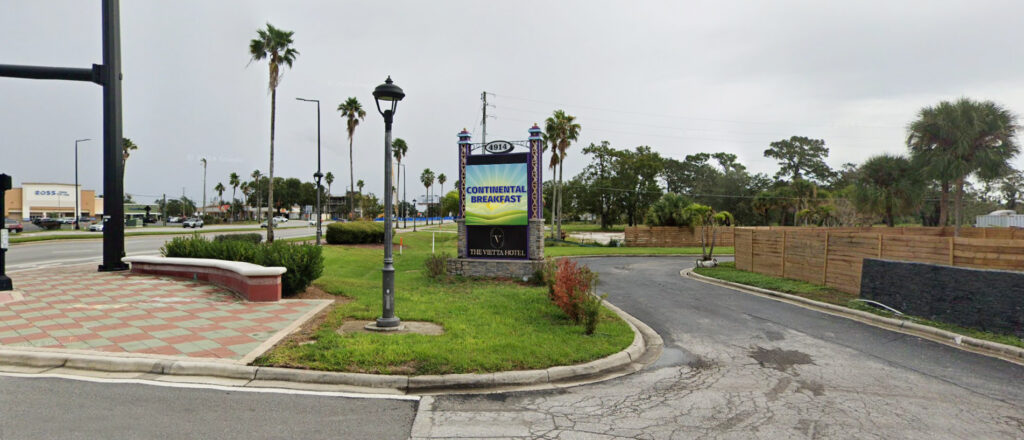
In the hospitality industry, guest experience isn’t just a nice extra—it’s a competitive differentiator. When digital signage in hotels and resorts is done right, it elevates first impressions, cuts friction, and delivers upsell opportunities. Done poorly, it can feel gimmicky. Here’s how to use hotel digital signage solutions, resort LED displays, and interactive guest signage to make your property feel premium, modern, and guest-focused. https://youtu.be/0rlPUWyYmE4 Why use LED signage in hotels? LED displays draw eyes to dynamic content and help you communicate at the speed of operations: welcome messages, live event updates, weather, shuttle times, and on-property offers. Because motion and brightness grab attention far more than paper posters, LED content is remembered longer—83% recall rate. What is digital signage in hotels? Hotel digital signage is a network of indoor LED displays, menu boards, lobby screens, room-adjacent panels, and interactive kiosks driven by a CMS. It lets teams schedule content by location and daypart (lobby vs. elevators vs. F&B), push emergency notices, and localize creatives by guest segment—all without reprinting anything. How can digital signage improve the guest experience in hotels? Clear, timely information reduces confusion and creates a polished arrival. Guests notice it: around 70% of hotel guests find on-property digital displays engaging or entertaining, which helps messages land without adding friction. When paired with wayfinding and timely updates, signage smooths movement through large properties and sets a modern tone. What are some innovative uses of digital signage in hotels? Interactive guest signage at concierge stations for local recommendations and live maps In-room LED displays for on-property promos, spa appointments, and late checkout offers Event & conference boards with live agenda changes, speaker profiles, and room changes LED video walls in lobbies to anchor brand storytelling and drive footfall into F&B What are the benefits of using digital signage in hotels? Practical wins include faster communication, fewer printing cycles, and data-driven creative rotation. On the revenue side, screens can influence buying behavior—19% of consumers report making an impulse purchase after seeing a digital ad—and strong visual recall supports upsell visibility across touchpoints. How can digital signage help with hotel operations? Operationally, screens become your live bulletin board. Teams can change check-in guidance, route guests around closures, and surface shuttle updates or weather alerts instantly. With self-service touchpoints rising, travelers increasingly expect tech-assisted journeys: 70% of U.S. travelers are likely to check themselves in via an app or kiosk rather than at a traditional front desk. How can hotels use digital signs for marketing? Use dayparted content and location-aware placement: breakfast promos in the morning; spa/amenity packages in the afternoon; bar specials and entertainment after 5 p.m. For reference, in retail settings, 19% of consumers say digital signage prompted an impulse purchase—so bringing similar logic to on-property F&B and experience promotions makes sense. How can hotels use digital signs to reduce queues? Pair queue-adjacent screens with “what to expect” steps, mobile check-in QR codes, and wayfinding alternatives (e.g. where to drop bags or pick up keys). Self-service adoption is rising—70% of U.S. travelers prefer app/kiosk check-in. Signage acts as a bridge, keeping lines moving and giving options. Why NEXT LED Signs Belongs in Your Plan Great content deserves excellent hardware. NEXT LED Signs builds indoor and outdoor LED displays designed for hospitality—bright, durable, and reliably legible. Our programmable LED signage platform makes content updates seamless. With in-stock inventory and fast shipping, NEXT LED Signs helps your team deploy guest experience enhancements quickly and confidently. With in-stock inventory, five-day shipping, and strong dealer support, NEXT LED Signs helps hotels and resorts create guest experiences that stand out. Ready to enhance guest satisfaction and revenue at your property? Contact NEXT LED Signs for a free quote. FAQs About Digital Signage in Hospitality What content format drives higher engagement in hotel displays?Combining short video loops, subtle motion, and localized promos tends to outperform static slides; motion attracts attention and helps display content feel fresh. Where should hotels prioritize placing video walls and smaller displays?Video walls are ideal in lobbies and focal gathering areas to anchor the environment; smaller displays perform better in hallways, corridors, and amenity zones for targeted messaging. How often should hotel signage content be refreshed?Refresh content weekly or rotate by daypart (morning, afternoon, evening) to avoid fatigue, and test different creative directions over time for performance. How can hotels quantify ROI from digital signage?Track uplift in service usage, conversion rates near screens, percentage of guests acting on promotions, and compare performance during control vs display periods. Do hotels need interactive kiosks, or will passive signage suffice?Start with strong passive displays to build content consistency; introduce interactive kiosks in zones where guests benefit from deeper engagement—wayfinding, menu lookup, special requests.
Creating a Premium In-Store Experience with LED Displays

When customers walk into a store, their first impression shapes how long they stay, how much they buy, and whether they return. LED displays play a big role in creating that premium in-store experience. Bright, dynamic visuals elevate the atmosphere, deliver information instantly, and set your brand apart from competitors. https://youtu.be/3ZAryOTVaoE What is retail digital store signage? Retail digital store signage refers to screens (LED displays, video walls, kiosks) installed inside shops, controlled by a centralized CMS, that dynamically present content like promotions, wayfinding, messaging, or interactive interfaces. These displays let stores update messaging instantly across locations and tailor visuals by zone or time of day without reprinting. What are the benefits of digital signs in retail? Digital signage offers speed, flexibility, and impact. Because screens can be updated, retailers eliminate printing cycles—saving cost and reducing waste. Visual recall is strong in hardware-enabled environments: digital signage enjoys an 83% recall rate, far surpassing static media. Customer behavior proves the payoff: 80% of customers say they entered a store because a digital sign caught their interest. And many retailers report average sales increases of 31.8% after deploying indoor digital signage. What type of signage is used in the retail store? Retail setups commonly include: LED displays and panels for product zones Video walls for striking visual centers Digital kiosks or interactive signage for self-service, product lookup, or loyalty logins Wayfinding screens in complex layouts Video walls often comprise 27% of the digital signage market and serve as attention magnets by anchoring focal areas. How do you use indoor LED signs to increase sales? Place displays near categories, point-of-sale, or high-interest zones. Use them to cross-sell accessories, highlight limited-time discounts, or rotate visuals that guide shoppers toward add-ons. Because digital signage captures 400% more views than static displays, you have a better chance at influencing decisions. At checkout, small screens or impulse messaging can drive incremental purchases: 19% of consumers report making impulse buys after seeing digital ads. What is the cost of an in-store retail digital store signage system? While hardware, software, installation, and training vary by scale, many retailers estimate that total system cost amortizes over 3–5 years through increased revenue and operational savings. You gain 30–35% reductions in advertising and printing costs and cut labor for signage changeovers. Is retail digital store signage easy to use? Yes—modern CMS platforms make it simple. Team users or store managers can swap visuals by location, schedule daily content, and preview changes. Because digital displays allow updates instantly, 95% of users rank ease-of-update among the top benefits. How is digital signage installed? Displays install via wall mounts, ceiling brackets, freestanding enclosures, or recessed setups. Media players plug into each display (or cloud-based systems stream content). Network connectivity ensures updates sync instantly. For retail chains, installs scale with rack-mount players and managed rollout plans. How can you use LED in a retail environment? Use LED displays for product showcases, ambient messaging, digital shelf tags, sizing guides, and window displays. LED panels excel in bright zones—thanks to high brightness and contrast—and can combine with touch capabilities for interactive features. Their modular nature allows video walls to scale across walls or pillars. How can a small business maximize in-store signage? Start with a few high-impact zones—entrance, checkout, and a cross-sell aisle. Use templated content you can rotate weekly. A/B test messages. Use your display network as a mini retail media network by showcasing brand partnerships. Even one display can pay for itself when paired with smart content and location strategy. What content ideas drive sales and engagement? Run rotating promotions, spotlight top sellers, use subtle motion to draw attention, run loyalty or member offers, countdown timers for flash deals, and display product testimonials or social media feeds. Tailor by daypart—morning, lunch, evening. Mix brand storytelling with hard sells to keep environments engaging. What should be displayed on digital signage in a store? High-level recommendations: Short headlines and supporting lines Clear call to action (e.g. “See this at aisle 5”) Imagery or video with product visuals Dynamic offers that change by time or inventory Localized content per store Wayfinding cues Loyalty or coupon prompts How can digital signage enhance the in-person shopping experience? Good signage informs, engages, and reduces friction. It helps shoppers find what they want, highlights helpful options, and delivers timely offers. Rather than wandering, customers feel guided. That sense of clarity, coupled with visual dynamism, transforms a store into a smart, immersive environment. Why NEXT LED Signs is the Right Choice Delivering a premium in-store experience requires technology that is bright, reliable, and easy to manage. NEXT LED Signs manufactures indoor LED displays engineered for clarity and performance. Our video walls and programmable signage are designed to capture attention, guide customers, and enhance brand presence. Every display comes with cloud-based software for simple updates, giving retailers the flexibility to keep content fresh and relevant. With in-stock products, fast five-day shipping, and strong dealer support, NEXT LED Signs makes it easy for retailers to create in-store experiences that customers remember. Ready to elevate your store with a premium in-store experience? Contact NEXT LED Signs today for a free quote and see how fast, reliable LED displays can transform your retail space.+ FAQs About LED Signage for Retail Stores How quickly can retailers see ROI from in-store digital signage?Many programs reach positive ROI in 6–18 months, and some case studies report payback in ~11 months depending on scale and content effectiveness. Where should stores place signage to improve wayfinding and reduce shopper stress?Put displays at decision points (entrances, aisle junctions, service counters). Smart wayfinding has been shown to cut shopper stress by ~20%, which helps keep dwell time and satisfaction up. Does dwell time on digital displays correlate with better outcomes?Yes—longer on-screen engagement is linked with up to 30% higher recall and up to 20% higher conversion rates when content is relevant. Are LED displays the preferred hardware for retail digital signage?Yes. The LED segment accounts for roughly 48.5% of the retail digital signage market,
LED Signs Create and Immersive Experience in Entertainment
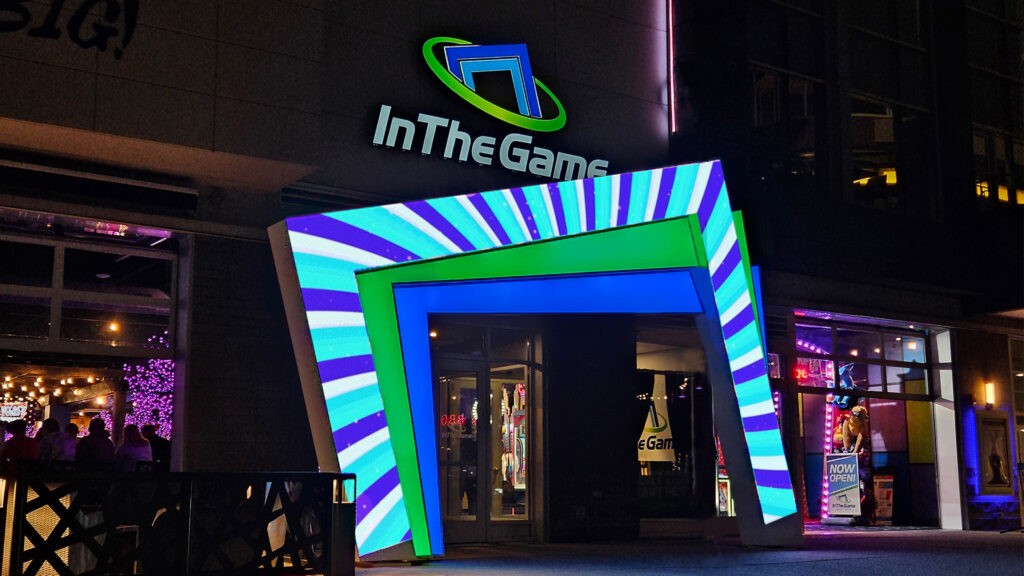
Think about the last concert, play, or theme park you visited—what stood out? Probably the lights, the energy, and the way it all felt like part of the show. That’s the power of LED digital signage. LED signs aren’t just screens anymore. They’re creating full-blown experiences that draw people in, hold their attention, and make every moment more exciting. Whether you’re at a packed stadium or walking through a museum, LED displays are shaping how we see and feel entertainment. Revolutionizing Concert Venues Modern concert venues are increasingly integrating advanced LED technology to enhance live performances. A prime example is the Sphere in Las Vegas, which boasts a 160,000-square-foot wraparound LED screen with a 16,000 × 16,000 resolution, providing an unparalleled visual experience. This high-resolution display envelops the audience, creating an immersive environment that complements the musical performance. Elevating Nightlife Ambiance In the realm of nightlife, LED screens are instrumental in crafting unique and engaging atmospheres. Nightclubs utilize LED walls to transform spaces, offering versatile designs that can adapt to various themes. These dynamic displays not only enhance the visual appeal but also provide interactive entertainment, making the environment more engaging for patrons. Theater Backdrops That Come to Life LED signs have made their way into live theater, too. Instead of relying on bulky sets or printed backdrops, theaters are turning to LED displays that can change scenes instantly. Directors get more creative freedom, and audiences get a more dynamic show. It’s a win-win. Theme Parks That Keep You Engaged Theme parks are all about the experience—and LED signs help make that experience seamless. They guide visitors with real-time info, add motion to attractions, and show branded content without breaking the flow. From rides to walkways, these signs help parks tell stories and keep people entertained at every step. Museums That Move and Teach Even museums are embracing LED displays to make learning more interactive. Video walls and immersive exhibits bring history, science, and art to life in ways that traditional setups just can’t match. It’s a better way to connect with visitors of all ages. Why It All Works Entertainment is about emotion, connection, and atmosphere. LED signs check all the boxes. They’re bright, flexible, and built to adapt to the moment. Whether it’s a concert, a theme park, or a gallery, LED displays help venues create moments that people don’t forget. From concerts and nightclubs to theaters, theme parks, and museums, LED technology enhances audience engagement and elevates the overall experience, setting new standards for entertainment environments. Next LED Signs Can Help Want to turn your venue into an experience people talk about?Next LED Signs offers powerful display solutions built for high-impact entertainment environments. Let’s talk about what’s possible. Contact Next LED Signs today to explore how LED digital signs can enhance audience engagement and strengthen your brand presence. Frequently Asked Questions How do LED signs increase audience engagement at entertainment venues?Studies show that digital displays capture 400% more views than static signs and increase message retention by up to 83%. That kind of visibility is why LED signs are used to energize crowds, reinforce branding, and keep people immersed in the moment. Are LED signs effective in both indoor and outdoor settings?Yes. High-brightness outdoor models ensure visibility in direct sunlight, while indoor LED walls deliver crisp visuals for stages and exhibits. According to the OAAA, digital signs maintain 94% viewability outdoors—even in high-traffic environments. Can LED signs be customized for different venue types?Absolutely. From a curved LED wall in a nightclub to a weather-sealed outdoor marquee for a theme park, each application is purpose-built. More than 70% of entertainment venues now use programmable LED displays to adapt content in real time. What makes LED signs better than traditional backdrops or static signage?Flexibility. You can change content instantly, show animation, and reduce setup time. LED signs also lower costs—saving on materials, labor, and printing. One study found that digital signage reduced operating expenses by up to 30% over five years. Why do entertainment venues choose Next LED?Next LED combines speed, reliability, and U.S.-based service. Our solid-state technology is built for performance and durability. In fact, clients report a 46% improvement in visitor satisfaction after implementing our digital displays.
LED Signs: A Single Purchase Asset With Multiple Uses
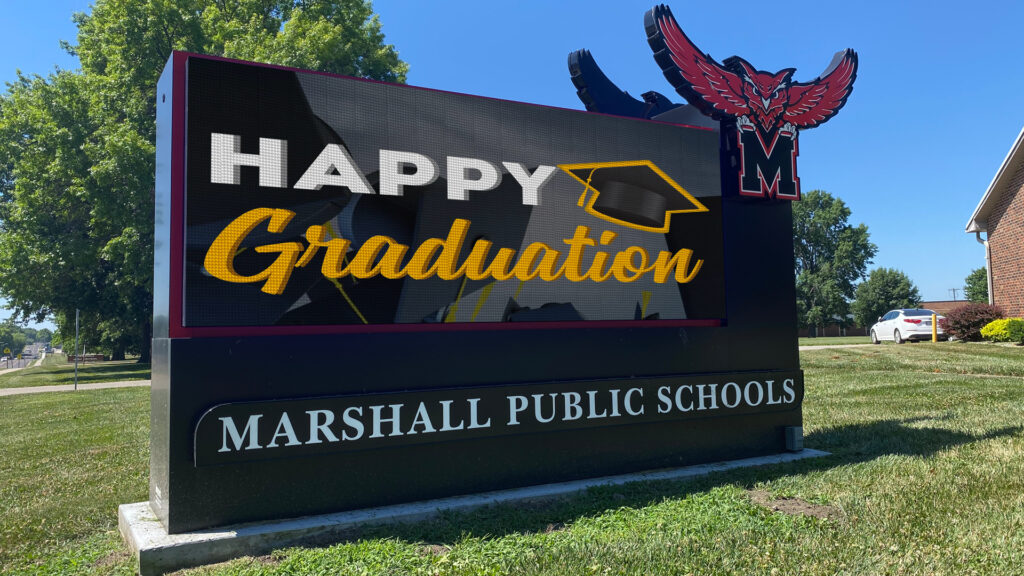
In industries like parking management, the term “single-purchase asset with multiple uses” has become a buzzphrase. It describes an investment that pays off across multiple applications—without recurring purchases. LED signs are a perfect example. Let’s break it down. What Does “Single Purchase, Multiple Uses” Mean? You buy one LED sign, and it serves many purposes: Communicate pricing and availability. Promote sales events in real time. Inform visitors of event schedules, times, and locations Display emergency alerts, weather updates, or public safety messages Promote fundraising efforts or community service drives Broadcast daily inspiration or notices All from one asset investment., Why LED Signs Stand Out Digital displays outperform static signage in reach and impact Digital signage is 47.7% more effective at raising awareness versus traditional static signs It has a 400% higher view rate than non-digital displays 65% of viewers can recall displayed messages after several days And 62% of people who see a public digital sign take action—whether it’s visiting a website, attending an event, or calling a number Who Benefits from One Asset, Many Uses? This isn’t just for churches or municipalities—it applies to any organization where messaging needs shift regularly, and budgets are lean: Parking facilities use one sign to display occupancy, pricing, wayfinding, promotional content, and sponsorship messages. Schools and campuses update event times, emergency alerts, athletic schedules, and registration drives. Municipalities relay weather warnings, senior center activities, public services, and local events. Nonprofits share volunteer opportunities, donation goals, crisis appeals, and community updates. Instead of posters, flyers, or banners, one LED display handles them all. How to Maximize Your Single-Purchase LED Asset Define multiple content zonesReserve sections of the display for different uses—urgent alerts, event countdowns, fundraising goals, and daily messages. Schedule smartlyUse cloud-based software to set content by time or event—morning announcements, evening alerts, weekend events. Refresh frequentlyChange messages daily or weekly to keep the sign relevant and avoid “content fatigue.” Measure effectivenessTrack responses to specific messages—event attendance spikes, donation drive upticks, volunteer sign-ups. This helps you demonstrate objective-based impact. Why This Model Works One investment. Multiple payoffs. Signage that replaces banners, flyers, and announcements. Real-time updates for dynamic needs like emergencies or events. Reusable messaging asset that delivers value year-round. Faster grant justification through measurable engagement metrics. Ready to Build Your Multi-Purpose Sign Asset? At NEXT LED Signs, we specialize in helping organizations purchase and implement signage that does more—without extra cost. Whether it’s a parking garage, a school campus, or a civic center, we’ll help you make one sign deliver maximum utility. Let’s talk about how one sign can do so much more. LED Signs & Single Purchase, Multiple Use Assets How do LED signs support the idea of single purchase, multiple use assets?LED signs are one-time investments that deliver ongoing value. After installation, they can be updated instantly to promote events, share pricing, announce emergencies, and more—without any additional hardware or printing. What types of organizations benefit most from LED signs as multi-use assets?Schools, municipalities, churches, and nonprofits often have diverse communication needs. LED signs help them share announcements, schedules, and fundraising updates from one central platform, making the most of a single purchase. How do LED signs reduce long-term costs for multi-use applications?LED signs replace the need for printed materials, banners, and temporary signage. That means fewer recurring costs for ink, paper, and labor—especially for organizations with tight budgets and frequent messaging changes. Why is message flexibility important in a single purchase LED sign?With just one sign, you can change messages in real time to reflect emergencies, weather alerts, donation drives, and more. This versatility turns LED signs into essential tools for efficient communication across multiple applications.
LED Sign Value Beyond Sales: Understanding ROO
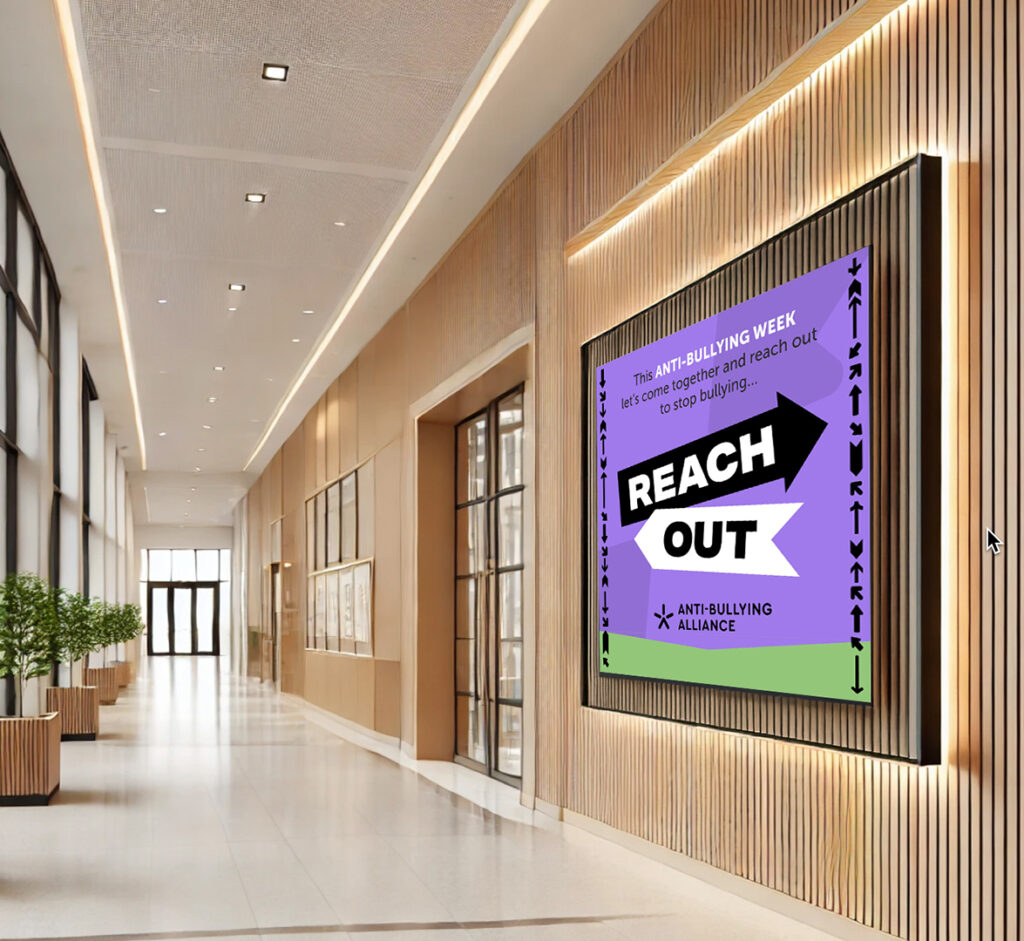
When people talk about marketing results, they often point to ROI—return on investment. But what if you’re not trying to increase sales? What if your goals are outreach, engagement, and visibility? That’s where ROO—Return on Objective—comes in. It’s how municipalities, churches, nonprofits, and community organizations can measure the impact of their LED signs when traditional sales metrics don’t apply. Let’s break down what ROO means, and how LED signs can deliver it. What Is ROO, and Why Does It Matter? ROO focuses on achieving mission-based goals, rather than generating revenue. Think about objectives like: Raising attendance at a local event Increasing voter turnout Growing church membership Promoting emergency resources Boosting volunteer participation These are measurable, meaningful goals—and digital signs can help achieve them faster and more effectively. Visibility = Action In the nonprofit and public sectors, awareness is everything. According to the OAAA, 62% of viewers immediately take action after seeing a digital billboard, and 52% engage in smart actions such as online searches or social media visits. When your LED sign shares a message like “Blood Drive Saturday” or “Cooling Station Now Open,” you’re not just informing passersby—you’re driving real action. That’s ROO in motion. Digital Signs vs. Traditional Outreach Printing flyers or banners takes time, costs money, and quickly becomes outdated. In contrast, digital LED signs: Update in real-time Reach thousands daily Eliminate printing costs Target messages based on time of day or weather Churches, for example, save on weekly bulletins, printed announcements, and seasonal signage—costs that add up fast. Municipalities cut down on the expense of mailing event notices or installing static banners across town. Instead of printing 500 flyers, one digital message can reach an entire community. Timely Messaging Builds Community Trust Speed matters. If your city opens an emergency shelter during a heatwave, there’s no time to wait for mailers. An LED sign shares that information in seconds—keeping people safe and informed. ROO is also about strengthening relationships. When people see their city, school, or church communicating regularly and transparently, trust increases. That’s a value that goes well beyond a dollar figure. Funding Made Easier Through ROO Metrics Many public and nonprofit projects are funded through grants, donations, or budgets that require accountability. Showing that your sign helped increase event attendance by 40% or cut printing costs by $2,000 makes future funding more likely. When you measure your success based on objectives—not profits—you create a clear, compelling story about your organization’s impact. Your Message Matters—Even Without Sales If your goal isn’t sales, that doesn’t mean you don’t need results. It means you need the right kind of results—and LED signs help you get there. Whether you’re a city trying to promote safety alerts, a church welcoming new members, or a nonprofit recruiting volunteers, digital signage is one of the most effective tools for engaging your audience. How Next LED Signs Can Help By regularly assessing the performance and relevance of your digital signage, you ensure that your communication remains effective and your branding stays consistent. With that being said, recognizing these warning signs allows you to make strategic decisions about when to upgrade. As a result, your messaging will remain impactful and aligned with your business objectives. Furthermore, an upgrade can position your business as an industry leader, demonstrating a commitment to innovation and modern technology. Contact Next LED Signs today to explore how LED digital signs can enhance audience engagement and strengthen your brand presence. FAQs: Understanding ROO and LED Signs What is the difference between ROI and ROO?ROI (Return on Investment) tracks profit-based outcomes. ROO (Return on Objective) measures success based on mission-driven goals, such as outreach, awareness, or attendance. Can LED signs really make a measurable difference for nonprofits or churches?Yes. According to studies from the OAAA, digital signs increase message recall and engagement. Many organizations report higher attendance and participation after installing LED signage. What are some examples of ROO for municipalities?Cities may track ROO by measuring increased attendance at public events, reduced reliance on printed materials, or faster dissemination of emergency alerts. How do LED signs help cut costs?LED signs eliminate recurring expenses like printing, shipping, and manual installations of banners or posters. They also reduce staff time spent on traditional communications. Is there data to support the effectiveness of digital signage?Yes. According to Nielsen, 55% of people who see a digital display can recall the message later. That recall rate helps drive community participation and support.
Digital Scoreboards and Sponsor Revenue
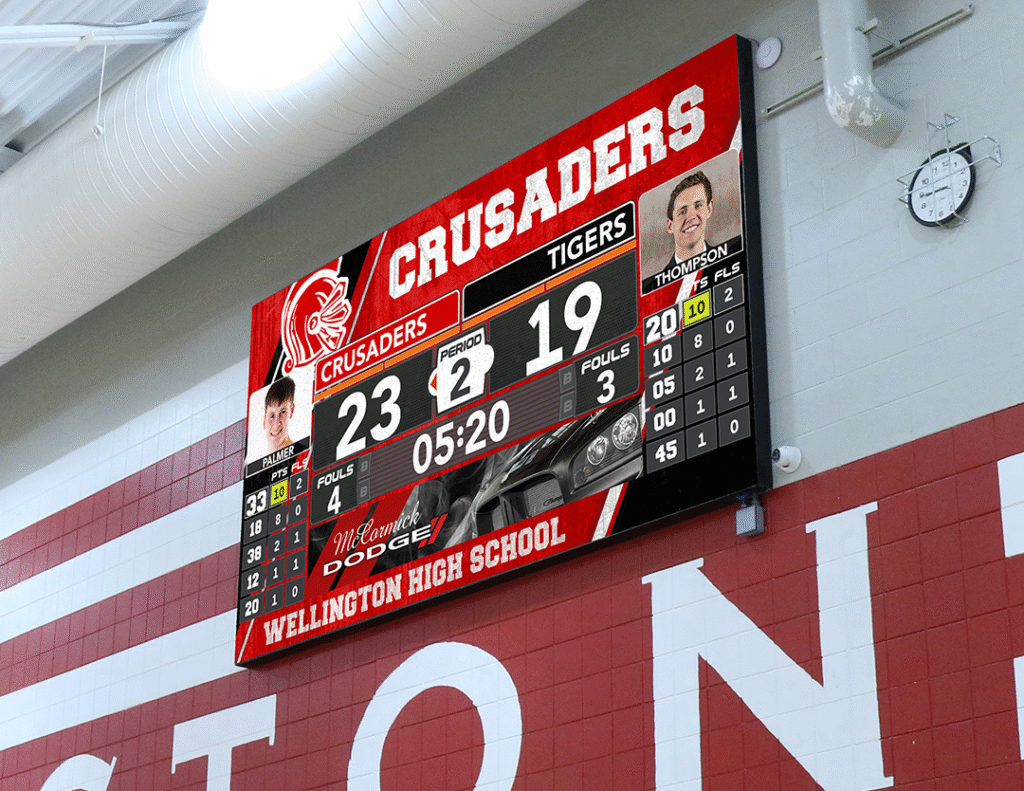
Digital scoreboards are doing way more than just keeping score. For schools, sports venues, and sponsors, they’ve become a major asset—bringing in revenue, creating memorable experiences, and making game day feel like a professional event. Let’s break down how these displays are changing the game—for fans, sponsors, and the bottom line. Scoreboards That Pay for Themselves Forget static signs. Digital scoreboards rotate ads throughout the game, giving multiple sponsors a chance to be seen. It’s not uncommon for a local business to invest $1,000 in scoreboard ads and see over $7,500 in return—that’s a 650% ROI during one high school football season. More ads. Better visibility. More revenue. Fans Stay Engaged—and So Do Sponsors Today’s scoreboards aren’t just digital—they’re interactive. Think live polls, social media shout-outs, sponsor highlights, and instant replays. The more the crowd pays attention, the more valuable those ad slots become. Sponsors love visibility, and fans love being part of the moment. Easy for Schools to Manage Modern LED scoreboard systems come with simple scheduling tools. With drag-and-drop software, schools can easily control what plays when—no technical expertise required. That means sponsor content is displayed right on time and exactly how it’s supposed to be. Real Results: What Schools Are Seeing It’s not just theory—it’s happening. Reports show that 95% of schools recover the cost of their digital scoreboard through sponsorship revenue within 12 months. Many go on to earn more than $10,000 per year just from advertising. Want a scoreboard but don’t have the full budget? Many schools team up with local sponsors who help fund the display in exchange for on-screen branding and exposure at every game. Benefits for Schools and Sponsors For Schools: Revenue Generation: Sponsorships can fund the board and support other programs. Educational Value: Students get hands-on experience managing digital content, video production, and marketing. For Sponsors: Captive Audience: Ads reach local fans who are already engaged and paying attention. Community Support: Associating with local teams builds goodwill and brand loyalty. A Smart Investment for Everyone Digital scoreboards aren’t just about the score—they’re about making every event more exciting and more profitable. Whether you’re a school looking for funding or a sponsor wanting meaningful exposure, LED scoreboards create value on every level. Schools can secure partial funding for their LED video displays through corporate sponsorships, where a brand’s name or logo is prominently displayed, enhancing visibility and community engagement. Key Takeaways Digital scoreboards are more than just a modern replacement for traditional scorekeeping—they’re a strategic asset for revenue generation and community engagement. By offering dynamic advertising opportunities and enhancing the fan experience, they provide significant value to both schools and sponsors. High ROI: Digital scoreboard advertising can yield substantial returns for sponsors. Enhanced Engagement: Interactive features keep fans engaged, increasing ad effectiveness. Operational Efficiency: Modern software simplifies ad management, ensuring timely and accurate displays. For schools and sponsors looking to maximize their impact and revenue, investing in digital scoreboard technology is a game-changing decision. Frequently Asked Questions How much revenue can schools generate with a digital scoreboard?Most schools generate between $10,000 and $25,000 annually through scoreboard sponsorships. In fact, 95% of schools recoup their full investment within the first year, according to customer reports. What makes digital scoreboard advertising so effective for sponsors?Digital displays grab attention with motion, color, and repetition. Studies show that digital signage captures 63% more attention than static signs and boosts brand recall by up to 83%, giving sponsors real visibility in front of a captive audience. Can students help manage the scoreboard and learn from it?Yes. Many schools incorporate scoreboard operations into student-led media programs. This hands-on experience teaches skills in video production, content scheduling, marketing, and even sales—skills that align with real career paths in broadcasting and advertising. Is it hard to manage advertising on a digital scoreboard?Not at all. Today’s systems include drag-and-drop software that lets staff or students manage content with ease. Schools report saving 20–30 hours per season compared to coordinating static signage, thanks to automated scheduling and centralized controls. Do local businesses actually see ROI from scoreboard advertising?Absolutely. A typical local sponsor investing $1,000 can expect returns of $5,000 to $7,500 over a single sports season. That’s a potential 650% return, driven by repeat visibility and strong community engagement. At Next LED Signs, we deliver high-performance digital scoreboards that do more than display scores—they create revenue opportunities. Our vivid, full-color LED displays support dynamic sponsor content, real-time updates, and fan engagement tools that help schools and sports venues turn every game into a revenue-generating event. With easy content management and industry-leading durability, Next LED Signs is your partner in both game-day excitement and long-term financial impact. Contact us today to find out more about how digital scoreboards can generate revenue for your organization.
Leasing a Digital Sign Makes Sense for Churches
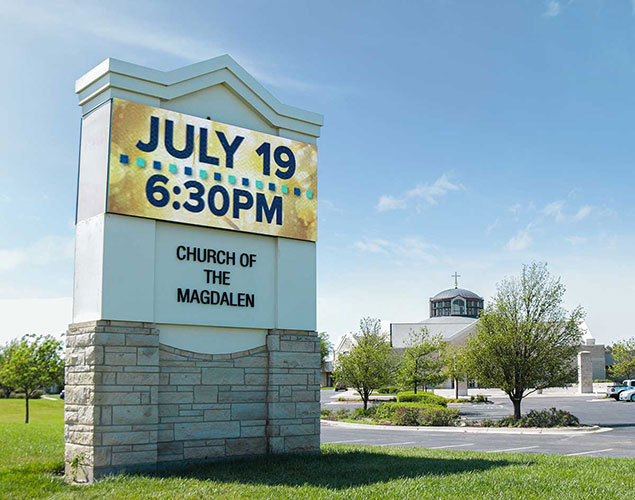
If your church isn’t selling products, how does leasing a digital sign make financial sense? The answer: cost savings, community impact, streamlined outreach, and mission-driven growth. Save on Printing, Flyers & Banners Churches often spend thousands each year on printed materials—bulletins, flyers, banners, and event signage. Industry data shows: Churches can spend up to $6,500 annually on printing and photocopying. Replacing these costs with digital signage can cut that expense by 76% (Source: commercialcopierleasingsouthflorida.com, mvix.com) Beyond cost reduction, digital content updates eliminate manual changes, distribution costs, and waste from outdated posters (Source: trudigital.com, crowntv-us.com) Leasing a sign means you don’t drain reserves or set aside months of fundraising—your operational savings can begin immediately. Make Messages Instant, Flexible & Effective When a response is needed quickly—like for flood relief, community drives, or schedule changes—flyers and banners often arrive too late. Digital signage lets you update messages instantly via cloud-based software Use live donation goal displays, event reminders, scripture quotes, or urgent alerts—all without setup delays or print costs That responsiveness leads to more engagement, stronger outreach, and a more connected congregation. Build Engagement and Grow Your Community Though churches don’t track revenue, growth isn’t measured in dollars—it’s in membership, involvement, and visibility. Digital signage can boost event attendance by as much as 65%, thanks to dynamic visual reminders Over half of worship venues use digital displays to deliver messages or show scripture 70% of Christian Millennials prefer scripture on screens, aligning with modern worship habits The message is clear: a sign isn’t just a cost—it’s a tool for inviting, serving, and strengthening community bonds. Lease to Upgrade Your Reach—Now Leasing makes high-quality signage accessible without long-term strain: Bring in the sign you’ve envisioned without waiting years to fundraise Avoid upfront capital costs—lease terms deliver manageable monthly payments tied to immediate benefit Planning to upgrade later? Leasing lets you pivot smoothly as needs evolve Summary: How a Sign Pays You Back Leasing LED signage for your church helps “pay itself forward” by: Reducing recurring print costs by up to 76% Enabling instant event and fundraising messaging Increasing attendance and engagement—often by more than 65% Delivering immediate ministry impact without waiting for long fundraising campaigns A better message than “signs pay for themselves” in dollars might be: With leasing, your sign starts building ministry value the day it’s installed. What Makes NEXT Different? Churches choose us not just because we sell LED signs—but because we understand what the sign is for. We don’t compete with you or your installer—we work with your team. We offer fast 5-day shipping on in-stock models, which means you don’t wait for months while your project stalls. We walk you through content planning, scheduling, and best practices, so you’re ready from Day 1. And we back it all up with responsive support—real people who understand ministry timelines and small-team needs. Contact us today to find out how you can put digital signs to work for your organization. FAQs About Digital Signs for Churches What savings should a smaller church expect?Even modest bulletins, weekly flyers, and occasional event banners add up. A digital sign could save several thousand dollars annually in print costs alone. Will congregants engage with screen-based messages?Yes—especially younger members. Many churches report higher attendance and donation participation when they use dynamic signs. Is updating the sign complicated?Not at all. NEXT LED Signs uses cloud-based software accessible from any device. Updates are instant and require no physical effort. What if I want a basic sign now and upgrade later?That’s exactly the advantage of leasing: access to entry-level signs now, with upgrade options available when your needs grow.
